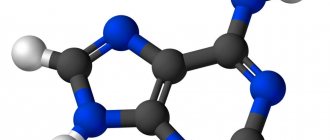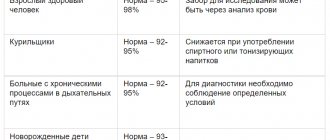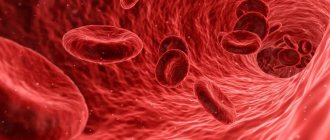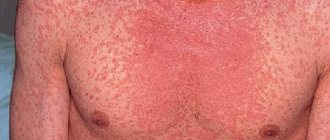Useful articles / February 26, 2020
- The measles virus is a dangerous infection that has been making headlines every now and then over the past few years. Outbreaks of measles are recorded all over the world, which is associated with the refusal of vaccination in the 90s of the last century and the lack of an immune layer of the population. Does this threaten an epidemic? After all, not every person can clearly say whether he or she has been vaccinated against measles. And if so, are there any antibodies left in the body? After all, they reduce the risk of re-infection.
Mass vaccination against measles around the world began in the 60s of the last century. Until this moment, the highly contagious disease (the most contagious and volatile of all infections!) was considered exclusively for children. Having had measles in childhood, a person received lifelong immunity. At that time, it was extremely difficult to avoid infection, so almost all children got sick. The fact is that measles is highly contagious - the figure is close to 100%, that is, the virus is quickly transmitted from a sick person to a healthy one. A simple example: if a patient in the active stage of the disease enters the same room with healthy people who do not have immunity to measles, then everyone will be infected. Cases have been described when a child with measles infected a healthy one who was on another floor of the same building - through air flows through the windows. For comparison, the contagiousness of influenza is only 1-2%. That is, the probability of catching the flu on the street or after direct contact with a patient is no more than 2%, but measles is almost 100%. What are the peculiarities of the course of the disease, the vaccine against it and immunity?
Detailed description of the study
The study is carried out using a chemiluminescent immunoassay to detect IgM antibodies to the measles virus. Used for diagnosis and examination of contact persons.
Measles is an acute infectious disease. The pathogen belongs to the class of paramyxoviruses. Symptoms:
- temperature increase;
- weakness;
- damage to the conjunctiva;
- dry cough;
- characteristic maculopapular rash;
- damage to the upper respiratory tract and oral mucosa;
- photophobia.
The source of infection is a person with measles (the last 2 days of the incubation period and 4 days after the appearance of the rash), the route of transmission is airborne droplets. Susceptibility to the pathogen is high; people of any age get measles. Persons with hypovitaminosis A and immune pathologies are more prone to infection. After suffering from the disease, stable lifelong immunity is formed.
The incubation period lasts from 9 to 11 days. Once it is over, the infected person develops a rash that gradually spreads from the face and neck to the torso, and then to the legs and feet.
In 20% of cases, people with measles experience complications:
- otitis;
- pneumonia;
- bronchitis;
- encephalitis;
- diarrhea;
- blindness.
Measles is especially dangerous for pregnant women, as it leads to pathologies of fetal development, spontaneous abortion, and premature birth. Early diagnosis of infection is carried out by enzyme immunoassay with the determination of IgM. In this way, the disease can be detected before specific symptoms appear.
Antibodies to measles virus IgG, Measles virus IgG quantity.
Antibodies to measles virus IgG, Measles virus IgG quantitative
- an indicator of the immune response to the measles virus, indicating past or current infection or vaccination against measles.
Measles
is an acute infectious viral disease caused by the Measles virus. Measles virus is an RNA virus that belongs to the paramyxovirus family, genus Morbillivirus. This virus quickly dies outside the human body, since it is unstable in the external environment.
The main route of transmission of the virus is airborne droplets. The measles virus mainly affects the mucous membrane of the back of the throat and respiratory tract.
Measles is a highly contagious disease that most often affects preschool children. It is found mainly in the cold season. On the 9th day after infection, fever, cough, and runny nose appear. On the 14th day a characteristic rash appears. People who have not had measles remain highly susceptible and can become ill at any time in their lives. Post-infectious immunity is usually lifelong, but there are cases of repeated diseases. Measles is rare in pregnant women, but in this case, premature birth and stillbirth are possible. No fetal pathology is detected. Infants of mothers who are immune to measles are protected from infection by maternal antibodies passed into their blood through the placenta until 6–7 months of age after birth. From the age of two, children’s sensitivity to the disease increases.
Antibodies to measles
IgG antibodies to the measles virus appear after IgM antibodies, approximately 2 weeks after infection. During the further development of the immune response, their concentration increases rapidly. Specific antibodies in the blood can be diagnosed in almost all patients with measles after 2 days of the appearance of the rash. In most cases, after an illness, IgG antibodies remain for life. IgG against the measles virus is also detected after vaccination. By their presence in the blood serum, one can judge the presence of immunity to this disease. In infants up to 6–7 months of age, maternal IgG antibodies obtained through the placenta from the mother’s blood during pregnancy can be detected in the blood (IgM antibodies do not pass through the placenta). Upon repeated contact with the virus, immune individuals experience a rapid increase in titers of highly specific IgG, which provides protection against infection (no clinical manifestations or virus shedding are observed).
Indications:
- screening studies to determine the presence of immunity to the measles virus and the need for vaccination;
- laboratory confirmation of the clinical diagnosis of measles (in combination with IgM antibodies, if necessary, in paired sera with an interval of 2 weeks);
- epidemiological studies.
Preparation
It is recommended to donate blood in the morning, between 8 am and 12 pm. Blood is drawn on an empty stomach, after 4–6 hours of fasting. It is allowed to drink water without gas and sugar. On the eve of the examination, food overload should be avoided.
Interpretation of the result
Units of measurement: IU/ml.
Assessment of immunity during vaccination:
- <0.12 IU/ml - negative, lack of immune response, vaccination is recommended (outside of pregnancy);
- > 0.18 IU/ml - presence of an immune response, monitoring after 5 years is recommended;
- 0.12–0.18 - questionable immune response, vaccination is recommended within 1 year.
Positively:
- if you have immunity against the measles virus (due to a past illness or vaccination);
- acute infection (confirmed by the presence of clinical signs, the appearance of previously absent IgG antibodies and a significant increase in IgG titers in paired sera, the presence of IgM class antibodies).
Negative:
- lack of immunity against measles (no history of measles, no specific vaccination, ineffective vaccination);
- early stages of infection (before the appearance of the rash). If clinical suspicion remains, the test should be repeated after 1–2 weeks to detect seroconversion.
Doubtful:
- result close to the threshold value. If clinical suspicions persist, the study should be repeated after 1–2 weeks.
BAU/ml - new interpretation of the test for antibodies to coronavirus
The World Health Organization has approved a new international standard for the determination of immunoglobulins for coronavirus, with the unit of measurement BAU (translated as “binding antibody coefficient”).
Interpretation of quantitative analysis for antibodies to coronavirus
Laboratory diagnostics
the level of immunity protection against coronavirus is carried out by studying immunoglobulins to the S-protein of the virus. To facilitate the interpretation of the study results, it was proposed to use a universal measurement system.
Conversion table for antibody test results from different manufacturers in BAU/ml
| Manufacturer | Conversion factor to BAU/ml |
| Abbott ARCHITECT | 0,142 |
| Roche | 1 |
Research method - Enzyme-linked immunosorbent assay (ELISA)
Material for research - Blood serum
Measles (Measles antibodies IgG, Measles (Rubeola) Antibody IgG, Anti measles virus igG). The disease is caused by the measles virus (paramyxovirus family). Transmission of the virus occurs through airborne droplets. The disease manifests itself as malaise, fever, cough, runny nose, and conjunctivitis. Over the next 5 to 6 days, patients are most contagious. Around the 14th day, a characteristic rash appears; the rash is often accompanied by headache, muscle pain, abdominal pain, vomiting, and diarrhea.
A pronounced enlargement of the lymph nodes and spleen that appears at the beginning of the disease can persist for several weeks. The most severe complications of measles include damage to the central nervous system. After measles, persistent lifelong immunity develops. A live measles vaccine can also provide intense immunity. Almost all adults have immunity against measles, either due to previous illness or vaccination. Measles is rare in pregnant women and can cause stillbirth, premature birth, and spontaneous abortion. However, measles does not cause birth defects in the fetus. In mothers who have immunity against measles, newborn children are protected from infection by maternal antibodies until 6–7 months of age after birth. Starting from the second half of life, children’s susceptibility to the disease increases.
The diagnosis of measles is made based on probable contact with a person with measles, the presence of a characteristic rash, a temperature above 38.4ºC for more than 3 days, as well as other symptoms, for example, conjunctivitis, difficulty breathing. In case of difficulties in diagnosing measles based on the clinical picture of the disease, it is advisable to use serological tests: determination of antibodies to the measles virus IgM and IgG. In addition, nonspecific laboratory signs of the disease are leukopenia with a decrease in the absolute number of neutrophils and a pronounced decrease in the number of lymphocytes in a general blood test in the prodromal period and the period of rash. IgG antibodies to measles virus appear after IgM antibodies, approximately 2 weeks after infection.
During the further development of the immune response, their concentration increases rapidly. IgG antibodies in the blood can be detected in almost all patients with measles by the 2nd day of the appearance of the rash. IgG antibodies after an illness usually persist for life. Also, the presence of IgG antibodies against the virus can be detected after vaccination. Their presence in a blood test for measles can indicate the presence of immunity to this disease. In newborns, maternal anti-measles IgG antibodies obtained through the placenta from the mother’s blood during pregnancy can be detected in the blood. They are detected in children up to 6–7 months of age. Anti-measles IgM antibodies do not pass through the placenta. Upon repeated contact with the virus, immune individuals experience a rapid increase in the titer of IgG antibodies in a blood test for measles, which provides protection against infection.
Interpretation of test results is for informational purposes only, is not a diagnosis and does not replace medical advice. Reference values may differ from those indicated depending on the equipment used, the actual values will be indicated on the results form.
A positive result (> 0.18 IU/ml) indicates immunity against the measles virus (past illness or vaccination) or acute infection (if clinical signs are present and the IgM antibody titer is increasing).
A negative result (<0.12 IU/ml) of the test indicates a lack of immunity against the measles virus (there was no measles disease in the past, no vaccination was carried out, or vaccination was not effective) or early stages of the disease (the test must be repeated after 10-14 days together with the study of IgM antibodies).
If a questionable result is obtained (0.12 - 0.18 IU/ml), the test should be repeated after 10 - 14 days.
Unit of measurement: IU/ml
Reference values:
- <0.12 – the result is negative.
- 0.12 – 0.18 – the result is doubtful
- ≥ 0.18 – positive result
Decoding the results of the test for antibodies to coronavirus
How to decipher a qualitative coronavirus antibody test
| Yes/No | Ig G (Eat) | Ig G (No) |
| Ig M (Yes) | 1 option | Option 2 |
| 5-10 weeks have passed since infection. IgM is still present in the blood, but IgG is already being formed | Acute phase of the disease. 1-3 weeks have passed since infection | |
| Ig M (No) | Option 3 | Option 4 |
| Several months have passed since the illness. You may have had the disease asymptomatically | You have not encountered any viruses or no more than 7 days have passed since infection |
Antibodies to coronavirus - table with interpretation of results
In the 2nd and 4th version
(if there are suspicious symptoms), it is recommended to take a PCR test for coronavirus to identify the pest.
The complete absence of immunoglobulins may also mean that:
1) The preparation conditions were not met and the result was distorted
2) The symptoms of influenza or ARVI were similar to the symptoms of coronavirus,
3) The patient suffered a mild form of the disease and did not develop antibodies.
4) The patient suffered a severe form of the disease, and the antibodies quickly disappeared.
Immune status for measles
April 12, 2021
The only measure to prevent measles is immunization.
As part of the national calendar of preventive vaccinations, the following is carried out:
at 12 months – vaccination (first vaccination in life), at 6 years – revaccination (second vaccination).
Child aged 1 year to 5 years 11 months. 29 days must have one vaccination against measles, aged 6 years to 17 years 11 months. 29 days two vaccinations against measles.
If a person has had measles, he is not subject to measles vaccinations during his life. Those who have had measles have lifelong immunity.
An adult is not subject to vaccination if there is evidence of two measles vaccinations given at any age, including in childhood.
The following adults are subject to vaccination against measles: those who have not been sick, not vaccinated, vaccinated once, who do not have information about vaccinations: the entire population under 35 years of age (inclusive), regardless of profession, from 36 to 55 years of age (inclusive), belonging to risk groups.
Risk groups include employees of medical and educational organizations, trade, transport, public utilities and social spheres; persons working on a rotational basis and employees of state control bodies at checkpoints across the state border of the Russian Federation.
Employees of medical organizations (without age restrictions) are recommended to have two vaccinations against measles or information about having had measles, confirmed by documentation or serological methods.
As part of the calendar of preventive vaccinations for epidemic indications, contact persons without age restrictions from foci of suspected measles who have not previously been ill, have not been vaccinated and do not have information about preventive vaccinations against measles or have been vaccinated once are subject to vaccination within 72 hours.
In the virological research laboratory of the Center for Hygiene and Epidemiology in the Republic of Bashkortostan, you can check your immune status for measles.
What is delivered for research: blood serum from a vein in the amount of 1 ml., delivery at a temperature of 2 to 8 ° C.
The price list for serological tests for immunity using ELISA in blood serum is 254 rubles 40 kopecks.
A positive test result for measles immunoglobulin G confirms protection against measles. A negative and questionable result indicates that a person can become infected with measles and needs to be vaccinated.
Indications for an individual study of immune status: loss by an adult of records in the medical records of measles in childhood; incomplete data on vaccinations (lack of series and name of the vaccine); the presence of factors that contribute to a decrease in immunity (hormone therapy, chemotherapy, anthelmintic drugs, HIV infection), occupational risk of infection due to contact with infectious patients (medical workers, etc.).
The research results must be included in the “Certificate of Preventive Vaccinations”, form No. 156/у section “Serological studies to determine the strength of immunity.”
Interpretation:
- 1. Past infection; 2. vaccination; 3. current acute infection (the diagnosis is confirmed by the presence of clinical signs, the presence of IgM class antibodies, the presence of seroconversion - the appearance of IgG in their initial absence, a 4-fold increase in titer in paired sera taken at an interval of 10-14 days)
- 1. Lack of infection (no history of measles, no specific vaccination, ineffective vaccination); 2. early stages of infection - before the appearance of a rash (it is advisable to repeat the study after 1-2 weeks to detect seroconversion)
Sample result (PDF)
What are antibodies to coronavirus?
Antibodies (also known as immunoglobulins) are special proteins that are produced and/or produced by plasma cells.
What do immunoglobulins do?
Immunoglobulins are formed in response to foreign bacteria or viruses entering the body. They interact with the antigen (specific site of the pest) and neutralize it.
Thus, our immunity guards our health.
What classes of immunoglobulins are there?
There are 5 classes of immunoglobulins
, some of which contain subclasses.
IgA - secreted on the surface of the epithelium and present in saliva, tears, and on the surface of mucous membranes.
IgM - detected upon initial exposure to antigen.
Indicates an acute infectious process in humans.
IgG is the main class of immunoglobulins that protects against viruses, bacteria, and toxins.
IgD is found on the surface of developing B lymphocytes. The function is not installed.
IgE - secreted during an immediate allergic reaction.
Measles around us: survival algorithm
Recently, reports of new outbreaks of this disease in Russia have begun to appear more and more often.
While these cases are sporadic in our country, in neighboring Ukraine they are already talking with might and main about the possible declaration of an epidemic - more than 18 thousand people have fallen ill there since the beginning of this year alone.
Our incidence, fortunately, is much lower, but an alarming trend is evident: according to Rospotrebnadzor, in December 2018-January 2019, the number of patients increased 3.5 times compared to the same period last year. Who is most at risk and how can they be prevented?
She is not harmless!
While television and print media report on the hardships of suffering from measles and its consequences, optimistic messages from survivors periodically appear on the Internet, saying that this disease is not so terrible. Moreover, it is even useful to get over the disease - they say that measles somehow miraculously protects the body from cancer. Among the adherents of this theory, even the concept of a “measles party” appeared: patients who spread the infection and are eager to “catch” it are invited to it.
Getting measles from contact with someone who is infected is as easy as shelling pears: 90% of those who are not immune to measles will get sick.
All a sick person needs to do is sneeze in a room and leave, and for at least another two hours they can become infected there.
The infection spreads for eight days: four days before the rash appears and four days after.
Measles can be severe and have serious complications in all age groups, but children under 5, adults over 20, and pregnant women are most vulnerable to it. The disease is accompanied by persistent fever up to 40°C and above, weakness and a general serious condition, and there is no specific treatment.
But that's not the worst thing. Measles deals a devastating blow to the immune system.
About a third of patients develop complications - from diarrhea, which appears in 8% of cases, to otitis media (5-10% of cases), pneumonia (in 6% of patients) and even inflammation of the brain - encephalitis (in 1 out of 1000 cases).
Measles as a cure?
As for the anti-cancer “efficacy” of measles, rumors about it are, to put it mildly, exaggerated, although there is indeed some connection between the infection and malignant tumors.
In 2014, the results of an experimental treatment based on the use of the measles virus for resistant multiple myeloma were published. The American Mayo Clinic patient actually went into remission after such therapy. Doctors believe that the result is due to the extremely high dose of the virus - it would be enough to vaccinate about 10 million people!
But scientists warn that one successful case in the history of medicine does not indicate the magical anti-cancer power of the measles virus. Moreover, it is not a reason to refuse vaccination against a serious or even fatal disease.
On the Internet you can also find statements from “experts” that, having had measles, we receive protection not only from cancer, but also from atopic dermatitis, asthma and allergies in general. All of them do not stand up to criticism, and the studies that are cited as “evidence” are either interpreted incorrectly or do not meet the requirements of evidence-based medicine, and, therefore, their results are simply incorrect.
Ig G - interpretation of the test for antibodies to coronavirus
To determine class G immunoglobulins in the blood, a qualitative and quantitative method for determining antibodies is used. Below is a table with a breakdown of the enzyme immunoassay for coronavirus (igG indicator for coronavirus).
Coronavirus antibody index - transcript of captions
| Result | Index | Meaning |
| Negative | Less than 0.8 | The patient either did not encounter the disease or underwent the procedure in the acute phase. |
| Border | 0,8-1,1 | You need to do a repeat test after 14 days. Perhaps the test was done at the onset of the disease or during the recovery process. |
| Positive | More than 1.1 | This level of antibodies to coronavirus in adults is normal. The person had coronavirus infection several months ago, and humoral immunity had time to develop. |
Class G antibodies to coronavirus - interpretation of results
An antibody titer to coronavirus of 1,800 (positive result) is normal. In this case, immunoglobulins of class A and M should be absent in the blood. Their presence indicates the stage of recovery.







